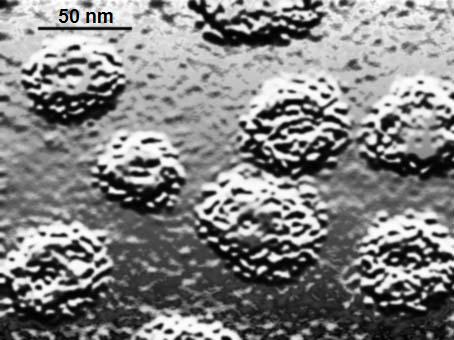Human Papilloma Virus
Interview with
Helen - Cervical cancer is the second most common cancer in women under 25 and the majority of these cancers are caused by infection of members of a family of viruses known as the human papilloma virus (HPV). There are more than a hundred different types of HPV which can cause verrucas and warts and all sorts of things (genital warts) but surprisingly just two types of HPV known as strains 16 and 18 are the cause of the majority of cervical cancers. This means it's been possible to make a vaccine to prevent infection of these cancer-causing strains. This is now being rolled out across the UK and given initially to girls aged between 12 and 13. Dr Anne Szarewski is from Cancer Research UK and she joins us now to explain a bit more about the vaccine. Thanks for joining us. Can we start off first of all with just a little bit about what HPV is and why does it cause cancer?
Anne - HPV is a human papilloma virus and it's an extremely common virus. Basically it's been described as a normal consequence of having sex. It's actually so common that just about everyone's going to get it at some point in their lives. In itself it's quite boring actually but the problem is that some people don't get rid of it. Most people catch HPV a bit like a cold and months later they've got rid of it. A small percentage of people don't get rid of it and it's those people where the virus becomes persistent, where it takes hold. Then it can start to change the cells, it can make them abnormal and it can cause cancer.
Helen - And now there's this brand new vaccine which we've been hearing about i the last couple of weeks. How does that work?
Anne - Basically what it does is it mimics the virus so it's called a virus-like particle. They've taken the coat of the virus and they've made it look exactly like the coat of the actual virus. There's no HPV DNA inside so there's no active anything that could actually give you disease. It's like a ghost in a way and so what it does is it makes the immune system think that the virus is actually there. The immune system recognises this coat and it reacts to it. You get a very strong response from the immune system without there being anything present that could actually harm you.
Helen - So why doesn't the presence of the virus itself not lead to any kind of immunity and a natural way of getting rid of the cancer?
 |
| HPV infected basal tissue © PhD Dre @ wikimedia |
Anne - It's a very interesting question and this virus appears to have evolved and adapted so it kind of sits around. What it does is it invades skin cells. If you think about this your immune system has to be more or less turned off to what goes on in your skin or we would all have loads of allergies. We'd all be atopic, eczematous. Your skin is actually relatively turned off in terms of immunity. The HPV takes advantage of that and it actually invades into skin cells which are kind of under the radar, if you like, of the immune system. It can just replicate quietly - doesn't go in the blood stream so it doesn't alert any part of the immune system that it's there. It just replicates and replicates and then skin is shed all the time. That's how it's passed on from one person to another. The other important thing to know about it is that it's not just transmitted through penetrative sex. It's transmitted though skin to skin contact so you can get it without actually having sex.
Helen - And coming back to the vaccine what sort of numbers do we need to look at in terms of protection to try and combat this as a disease in the population?
Anne - If we're looking at what's called herd immunity where you have enough people vaccinated so that the whole population becomes protected, even those who aren't, then you're really talking around 80% which is quite an ambitious target.
Helen - Absolutely. Why is it we're targeting these girls at this particular age, around 12 years old?
Anne - Two reasons. One is that the vaccines will obviously work best before there's been any contact with HPV. You want to vaccinate people before they've actually had sex. Also, importantly most vaccine actually work best when they're given to younger children and adolescents. In terms of immunity you're actually quite old by the time you're 20 which is rather a sad thought. Your immune system's already running down by then so you get the best antibody response if you actually give it to young adolescents.
Helen - Am I right that there is some level of cross-protection to other types of HPV that cause other problems like genital warts? Have we got any protection against those things as well with this vaccine?
Anne - Then I think it's important to realise there are actually two vaccines. One of them does contain the strains of HPV that would be to genital warts. The one that's been rolled out in the vaccination programme is the one that only contains the cervical cancer types. However it does appear that there is cross-protection against other HPV types but they are the cancer types. Interestingly enough this vaccine that is being used in the programme appears to have quite good protection against HPV 45 which is another of the more important ones in cancer and also HPV 31.









Comments
Add a comment